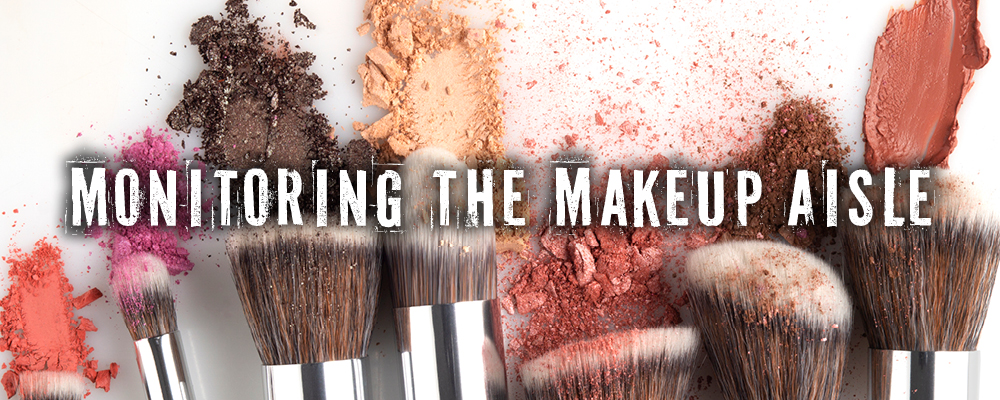
MoCRA Ushers in a New Era of Oversight for Cosmetics1
By Emily Zambrana, Nury Yoo, Emily Dodane and Kadeejah Kelly-Previl
Touted by the Food and Drug Administration (FDA) as “the most significant expansion of the FDA’s authority to regulate cosmetics since the Federal Food, Drug, and Cosmetic Act (FDCA) was passed in 1938,” the Modernization of Cosmetics
Regulation Act of 2022 (MoCRA)2 is shaking up an industry that, historically, the FDA has lightly regulated. Prior to MoCRA, the FDCA did not require product or facility registration, Good Manufacturing Practices (GMP), safety substantiation,
or adverse event reporting for cosmetics, and it did not grant the FDA mandatory recall authority over cosmetics. Now, MoCRA sets the stage for an increasing level of oversight of the cosmetic industry, primarily aimed at pursuing product safety.
MoCRA’s New Requirements
MoCRA’s main requirements can be organized into five categories: (1) registration; (2) safety substantiation; (3) adverse event reporting and recordkeeping; (4) labeling, and (5) GMPs.3 Some requirements are imposed on cosmetic manufacturing
facilities, while some are imposed on the “responsible person,” defined as the “the manufacturer, packer, or distributor of a cosmetic product whose name appears on the label.”4
(1) Facility Registration and Product Listing
MoCRA requires upfront work to register any existing facility that manufactures or processes cosmetic products intended for sale in the United States with the FDA—regardless of whether the facility is located in the United States.5 Facility registrations must be renewed every two years, and new facilities must be registered within sixty days. The FDA has developed an online “Decision Tool” to help businesses determine whether they are required to register a cosmetic
product facility.
6
MoCRA also requires that the responsible person submit to the FDA a list of each marketed cosmetic product, including product ingredient information, intended for sale in the United States.7 This product listing must be updated on an annual
basis, and new cosmetic products must be submitted within 120 days of marketing the product.
The FDA has authored several guidance documents to help businesses comply with the new registration requirements.8 The initial deadline for registering facilities and products was July 1, 2024.
(2) Safety Substantiation
MoCRA imposes greater recordkeeping obligations regarding product safety. Notably, cosmetic makers must “maintain records supporting” the existence of “adequate substantiation” that a cosmetic product is “safe,”
meaning “not injurious to users under the labeled, customary, or usual conditions of use.”9
While the underlying concept of safety substantiation is not new to the industry,10 the FDA has provided limited guidance on what substantiation is “adequate” under the law. According to the FDA, “neither the law nor FDA
regulations require specific tests to demonstrate the safety of individual products or ingredients.”11 The FDA has stated that manufacturers “can use relevant safety data that is already available” to support the safety
of their products, but may “need to do toxicological testing to fill in any gaps in the information that’s available.”12 In addition, per longstanding FDA guidance, cosmetics “must not contain any harmful microorganisms,
and the number of aerobic microorganisms must be low.”13
It’s worth noting that MoCRA does not provide the FDA with broad and immediate access to safety substantiation records. The FDA has access to safety substantiation records only if the Administration has a reasonable belief that a cosmetic product
is likely to be adulterated such that its use presents a threat of serious adverse health consequences or death.14
(3) Adverse Event Reporting
MoCRA mandates adverse event reporting and recordkeeping for cosmetic products. The responsible person must submit reports of any “serious adverse events” to the FDA within fifteen business days and maintain records of all adverse events
reports (whether serious or not) for six years.
MoCRA’s definition of “serious adverse event” is similar, but not identical, to the definition used for dietary supplements and OTC drugs. Most significantly, MoCRA’s definition adds “infection” and “significant
disfigurement (including serious and persistent rashes, second- or third-degree burns, significant hair loss, or persistent or significant alteration of appearance), other than as intended, under conditions of use that are customary or usual.”15
(4) Labeling
MoCRA creates several new labeling requirements in addition to those already imposed by the FDCA and Fair Packaging and Labeling Act:
- Starting December 29, 2024, cosmetic labels must include contact information (such as a domestic address, domestic phone number, or website) for the responsible person.
- Starting December 29, 2023, products intended for use only by professionals must be clearly marked.
- Lastly, MoCRA requires the FDA to publish regulations that will mandate label disclosure of fragrance allergens.
(5) Good Manufacturing Practices
MoCRA requires the FDA—in consultation with cosmetic manufacturers, consumer organizations, and other experts—to publish regulations establishing mandatory cosmetic GMPs. The law mandates that, to the extent practicable and appropriate,
the GMPs be consistent with existing national and international standards and flexible enough to accommodate various sizes and types of facilities.16
The FDA published draft guidance for cosmetic GMPs in 2013, but compliance with those GMPs remained voluntary and have not yet been adopted as mandatory.17
MoCRA Effective Dates
Many of MoCRA’s requirements are already in effect, while others—such as GMPs and fragrance allergen labeling—are still under development. The below table includes an overview of the status and effective dates for the new requirements:
| MoCRA Requirement | Status | Effective Date |
| Facility Registration | Final | July 1, 2024 (enforcement discretion expires) |
| Product Listing | Final | July 1, 2024 (enforcement discretion expires) |
| Safety Substantiation | Final | December 29, 2023 |
| Adverse Event Reporting | Final | December 29, 2023 |
| Professional Use Labeling | Final | December 29, 2023 |
| Contact Information Labeling | Pending | December 29, 2024 |
| Fragrance Allergen Labeling | Under Development | Proposed rule was due on June 29, 2024 |
| GMPs | Under Development | Proposed rule is due on December 29, 2024. (However, it is unclear whether the FDA will meet this deadline.) |
Anticipated MoCRA Impacts
MoCRA contains an express preemption provision prohibiting states from establishing any laws, regulations, or other requirements for cosmetics that differ from federal law with respect to registration and product listing, GMPs, recordkeeping,
recalls, adverse event reporting, or safety substantiation.18
However, there are several exceptions:
- State laws passed prior to MoCRA that require cosmetic ingredient reporting, such as California’s Fragrance and Flavor Ingredient Right to Know Act,19 continue in effect.
- States may continue to prohibit or limit the use of ingredients in cosmetic products,20 or to require warning language (e.g., Proposition 65).
- Litigation based on state causes of action may continue. Some claims, however, may be preempted by the FDCA’s preexisting preemption provision related to labeling of cosmetics.21
As MoCRA regulations continue to take effect over the coming months, cosmetic companies should prepare for a potential uptick in litigation as plaintiffs use MoCRA-mandated disclosures, such as product registration and adverse event reporting,
to bolster product liability or false advertising claims. In addition, cosmetic companies should anticipate plaintiffs in active litigation to seek discovery of MoCRA-mandated records, such as safety substantiation and adverse event reports.
We may also see plaintiffs test MoCRA non-compliance theories, such as incomplete registration, non-compliant labeling, or inadequate safety substantiation, as a component of litigation. Of course, it will take time to see the full impact
of MoCRA on cosmetic litigation, as theories are tested and adjudicated, the FDA issues additional regulations and guidance, and the Supreme Court's overturning of Chevron makes agency interpretation more vulnerable to challenge.
Compliance with MoCRA’s rules and regulations doesn’t have to be a daunting and overwhelming task for cosmetic companies. Cosmetic makers should work with their internal and outside counsel to understand the intricacies of MoCRA, help
ensure accurate implementation of MoCRA rules, and devise strategies to help companies mitigate litigation risk.

| Emily ZambranaSenior Principal Legal Counsel, Whole Foods MarketEmily Zambrana is in-house regulatory counsel for Whole Foods Market, where she specializes in advising on labeling and related regulatory issues for food, cosmetic, and other consumer products. Prior to joining Whole Foods, Emily
worked at Faegre Drinker Biddle & Reath, where she defended food and agribusiness companies in false advertising class actions and other product liability lawsuits, and advised food and beverage companies on product labeling
and advertising. |
 | Nury YooPartner, Faegre Drinker Biddle & Reath LLPNury Yoo helps clients in the food and beverage, fresh produce, cosmetics, dietary supplement, OTC drug, personal care, medical device, restaurant, and alcohol beverage industries to navigate regulations, anticipate and manage
risk, and defend against challenges. Her areas of focus include regulatory compliance, labeling, claims and substantiation, marketing and advertising, food safety, product recalls, due diligence reviews for private investment,
consumer and competitor challenges, and California’s Proposition 65. |
 | Emily T. Dodane Associate, Faegre Drinker Biddle & Reath LLPWith experience in federal and state courts, Emily Dodane works with the product liability group to counsel on regulatory compliance and defend liability and mass tort litigation involving a range of products such as medical devices,
food, and personal care and cosmetic products. One significant focus of Emily’s practice is to assist companies with developing best practices for their products and mitigating risk. |
 | Kadeejah J. Kelly-PrevilAssociate, Faegre Drinker Biddle & Reath LLPKadeejah Kelly-Previl defends clients in product liability, mass torts and commercial litigation cases. She previously represented contractors, developers and corporations in high-exposure cases including New York Labor Law, premises
liability, product liability and negligence matters. Kadeejah is also experienced in defending malpractice claims against attorneys, accountants, architects, engineers, funeral home directors and other professionals. In addition,
she has handled the defense of automobile and transportation matters. |
Notes
1. This article was finalized in June 2024 and does not include FDA policy updates, announcements, or case law updates that have occurred since then.
2. Modernization of Cosmetics Regulation Act of 2022 (MoCRA), FDA, https://www.fda.gov/cosmetics/cosmetics-laws-regulations/modernization-cosmetics-regulation-act-2022-mocra.
A “cosmetic” is defined by the FDCA as any product (except soap) “intended to be rubbed, poured, sprinkled, or sprayed on, introduced into, or otherwise applied to the human body . . . for cleansing, beautifying, promoting
attractiveness, or altering the appearance.”
3. There are a few other MoCRA provisions relating to testing for talc/asbestos in cosmetics, evaluating the safety of Perfluoroalkyl and Polyfloroalkyl substances (PFAS) in cosmetics, and the elimination of animal testing, that are not discussed
in this article.
4. 21 USC § 364(4).
5. 21 USC § 364c (a)(1)(A).
6. Decision Tree for Registration of Cosmetic Product Facilities, FDA, https://collaboration.fda.gov/decisiontool/.
7. 21 USC § 364c (c)(1); 21 USC § 364c (c)(4)(A)(iv).
8. Guidance for Industry: Registration and Listing of Cosmetic Product Facilities and Products, 2023-12, FDA, https://www.fda.gov/regulatory-information/search-fda-guidance-documents/guidance-industry-registration-and-listing-cosmetic-product-facilities-and-products; Guidance for Industry: Compliance Policy
for Cosmetic Product Facility Registration and Cosmetic Product Listing, 2023-11, FDA, https://www.fda.https://www.fda.gov/cosmetics/registration-listing-cosmetic-product-facilities-and-products.
9. 21 USC § 364d (a); 21 USC § 364d (c)(2).
10. 21 CFR § 740.10 has required cosmetics products without adequate substantiation of safety to bear a label warning since the 1970s.
11. Modernization of Cosmetics Regulation Act of 2022 (MoCRA), FDA, https://www.fda.gov/cosmetics/cosmetics-laws-regulations/modernization-cosmetics-regulation-act-2022-mocra.
12. https://www.fda.gov/cosmetics/cosmetics-science-research/product-testing-cosmetics.
13. https://www.fda.gov/cosmetics/cosmetics-science-research/product-testing-cosmetics.
14. 21 USC § 364f (a).
15. 21 USC § 364 (5)(A).
16. 21 USC § 364b.
17. Draft Guidance for Industry: Cosmetic Good Manufacturing Practices, 2013-06, FDA, https://www.fda.gov/regulatory-information/search-fda-guidance-documents/draft-guidance-industry-cosmetic-good-manufacturing-practices.
18. 21 USC § 364j.
19. Cal. Health & Safety Code § 111792.
20. Several states, including California, Maryland, New York, Oregon, and Washington, have prohibited the use of certain ingredients and chemicals in cosmetic products. See, e.g., California’s AB 496 (effective January 1, 2027, prohibiting
the sale of cosmetics containing twenty-six intentionally added ingredients).
21. 21 USC § 379s.